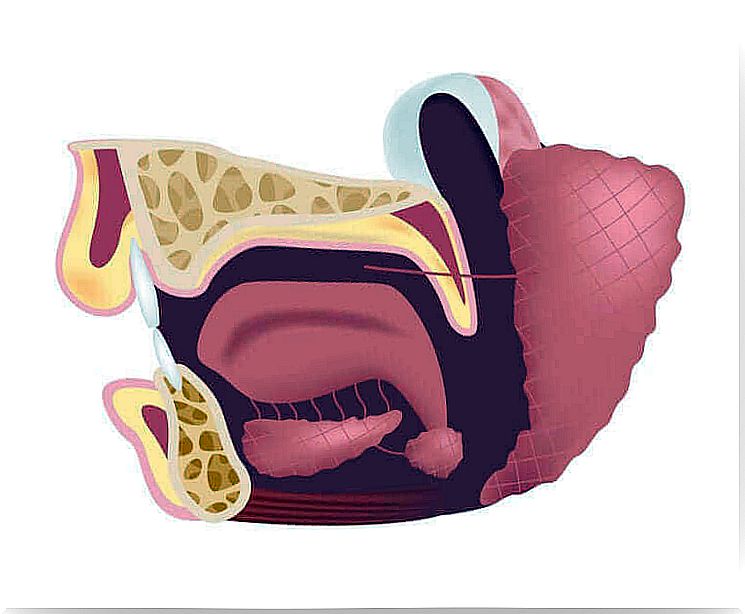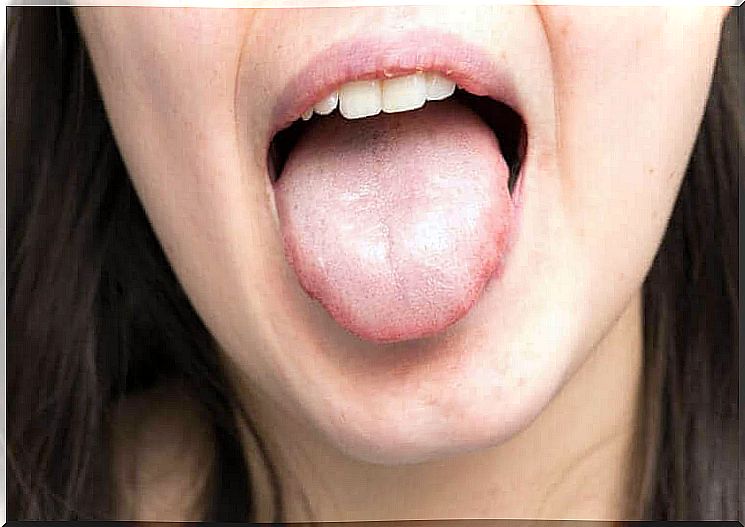Submandibular Glands: What Are They Used For?
The submandibular glands are salivary glands located under the palate of the mouth. Although they are less well known than the parotid glands, they perform necessary functions related to the production of saliva. We will tell you more about their functions.

Submandibular (or submandibular or submandibular) glands get their name from their anatomical location in the skull. Indeed, they are found under the floor of the mouth.
They are part of the major group of salivary glands, which includes the submandibular, parotid and sublingual glands. The parotid gland is regular, one on each cheek, near the ears. The sublinguals are distributed under the tongue.
The weight of the submandibular glands is small, no more than 15 grams each, and they are among the first to appear in the fetus during gestation. Of course, their main function is the formation of saliva.
Anatomy of the submandibular glands
The submandibular glands are made up of connective tissue and glandular tissue. Glandular tissue comes in two forms: serous and mucous. Connective tissue is made up of fibers that support the structure.
From the gland itself a duct is formed, which has the function of pouring saliva into the oral cavity. It is called the Wharton submandibular canal and is approximately two inches long.
Wharton’s canal is visible and palpable through the oral cavity. It is located on either side of the lingual frenulum. Sometimes, to find out whether the canal is blocked or not, the dentist can stimulate the glands and check that the opening of the mouth corroborates the expulsion of saliva.
The nerves that reach the glands to control the production of saliva are the tongue and certain branches of the face. It is a very irrigated area by arteries and veins, like the whole mouth.

The functions of saliva
If we ask ourselves what the submandibular glands are for, the obvious answer is the production of saliva. It is in the framework of the salivary system that they constitute that their importance lies.
Along with the parotid and sublingual glands, as well as the minor salivary glands, these organs are responsible for supplying saliva to the mouth. If we understand the functions of saliva in the body, we can understand the reason for the existence of submandibular glands.
Saliva is a colorless liquid whose main function is to lubricate the mouth. In a full day, we can produce up to a liter and a half of this substance. Its functions are as follows:
- Make swallowing easier : Food is chewed and enveloped in saliva before it begins its journey to the rest of the digestive tract. The coating provided by the saliva lubricates this passage of the food bolus, facilitating ingestion
- Heal the mucosa : saliva is a powerful antiseptic and protector. It contains substances that prevent infection and stimulate healing in case of injury inside the oral cavity
- Regulate the acidity of the oral environment : the foods we eat can be acidic or basic. If the acidity values of food are extreme, there is a possibility of damaging tooth enamel. To counter this, saliva neutralizes substances in an attempt to equalize them to a neutral pH.
- Break down starches : In saliva, there is an enzyme called alpha-amylase. This enzyme breaks down large carbohydrates to make them smaller and easier to get into the blood. When alpha-amylase reaches the stomach, it is inactivated by hydrochloric acid

Diseases of the submandibular glands
Like any organ in the body, the submandibular gland can suffer from disorders and pathologies that affect it. Although little is known about these glands, dentists are well aware of their existence and the associated problems.
Most often, stones form and block the Wharton’s canal. These stones are technically called sialolites. If they are too big and get stuck in the saliva exit path, the gland becomes swollen.
Sialoliths are rare in children, but can occur sporadically. The highest prevalence is observed in adults up to the age of 50 years.
The submandibular glands can also be infected. Viruses and bacteria have the potential to invade salivary tissue, inflaming it, and blocking the Wharton’s canal.
In conclusion
The submandibular glands are organs that are part of the set of major salivary glands, along with the parotid and sublingual glands. They perform the essential function of producing the saliva that we use every day.
Saliva is essential for the digestion of food, to protect the oral lining and to take care of the teeth. A deficiency or absence of saliva alters all of these processes.
Finally, we cannot forget that the submandibular glands can become infected and blocked by stones. If you have symptoms in these areas, it is advisable to see a dentist.









